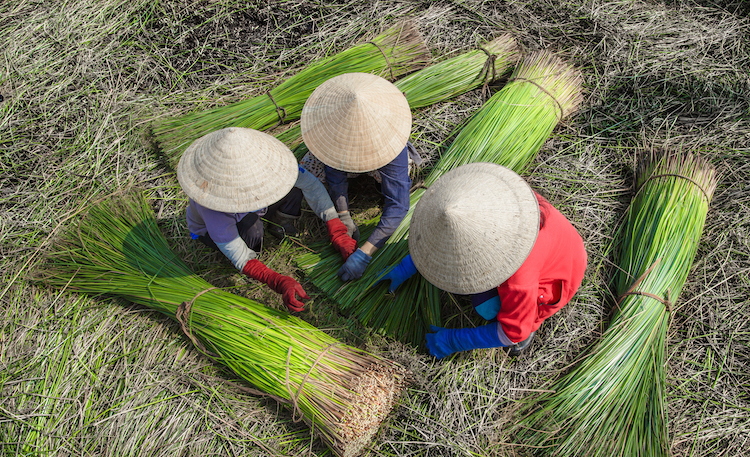
Women in harvest photo via Shutterstock
This post comes courtesy of Danielle Nierenberg of Food Tank: The Food Think Tank
Women are the backbone of farming. Across the planet, women and girl farmers play a big role in changing the food system and creating a well-nourished world. In fact, approximately 70 percent of all farmers in the developing world are women. In poor and rich nations alike, they are taking on more defined roles in food and agriculture.
Food Tank and the Global Forum on Agricultural Research (GFAR) produced this new video highlighting how meeting the needs of women farmers equals a better world.
The video calls upon eaters, business leaders, policymakers, funders, and donors to invest more in women for greater nutritional diversity, healthier children, children who do better in school, a stronger economy, and a less hungry world.
If access to new technology and resources is made available to women farmers, yields could increase by 20 to 30 percent and could reduce the number of hungry people in world by 100 to 150 million people. When women have the right tools, they have limitless potential.
According to the U.N. Children’s Fund (UNICEF), “healthy, educated, and empowered women are more likely to have healthy, educated, and confident children.”
Yet, while women are responsible for the majority of food production, they are also more likely to suffer from hunger during food shortages. Addressing the deep-rooted inequalities that currently prevent women from gaining equal access to tools and resources will level the playing field and help close the gender gap.
More on women in agriculture:
According to Landesa, when women farmers have secure land rights, family nutrition improves; women become less vulnerable to contracting HIV/AIDS; and children, especially girls, are more likely to stay in school longer.
In 2012, GFAR brought together women from more than 50 countries at the First Global Conference of Women in Agriculture to highlight the importance of reducing the gender gap in agriculture.
According to GFAR, women represent 43 percent of the world’s agricultural labor force and 47 percent of the global fisheries labor force.
The World Bank’s World Development Report 2012 stresses that gender equality can lead to increased productivity; women’s control of household resources can improve the livelihoods of the next generation; and empowering women as economic, social, and political actors can result in more representative decision-making.
Jal Kanya Women Farmers Group in the Dhankuta district of India started a monthly savings group, and they now have nearly US$1,000 in funds, which they use to make loans to members.
According to the U.N. Food and Agriculture Organization (FAO), female farmers produce less than male farmers, but not because they are less efficient; instead, evidence shows that the difference is caused by access to inputs. If women had the same access to resources as men, they could raise total agricultural production in developing countries by 2.5 to 4 percent. Gains of this magnitude could reduce the number of hungry people in the world by 12 to 17 percent!
More investment in women farmers will help alleviate hunger and poverty and will lead to more social justice and empowerment for girls and women. When women earn more, they invest more in the health of their families, thus ensuring vibrant, well-nourished, and happy future generations.
ABOUT FOOD TANK
Food Tank: The Food Think Tank, founded by Danielle Nierenberg and Ellen Gustafson, is a think tank focused on feeding the world better. We research and highlight environmentally, socially, and economically sustainable ways of alleviating hunger, obesity and poverty and create networks of people, organizations, and content to push for food system change.


